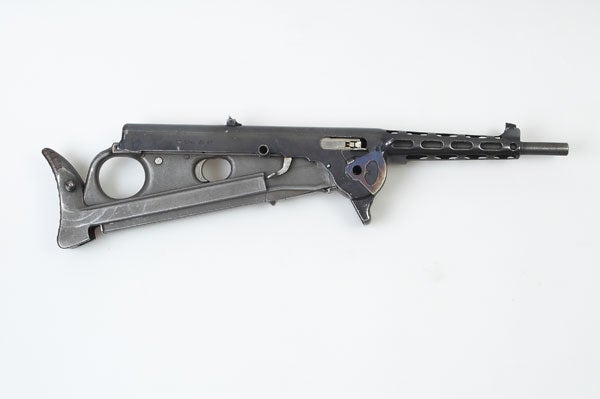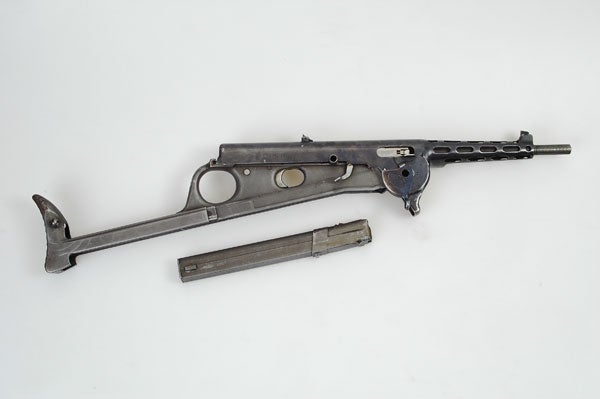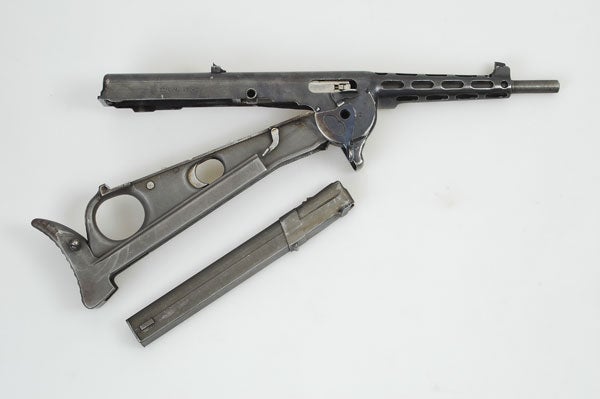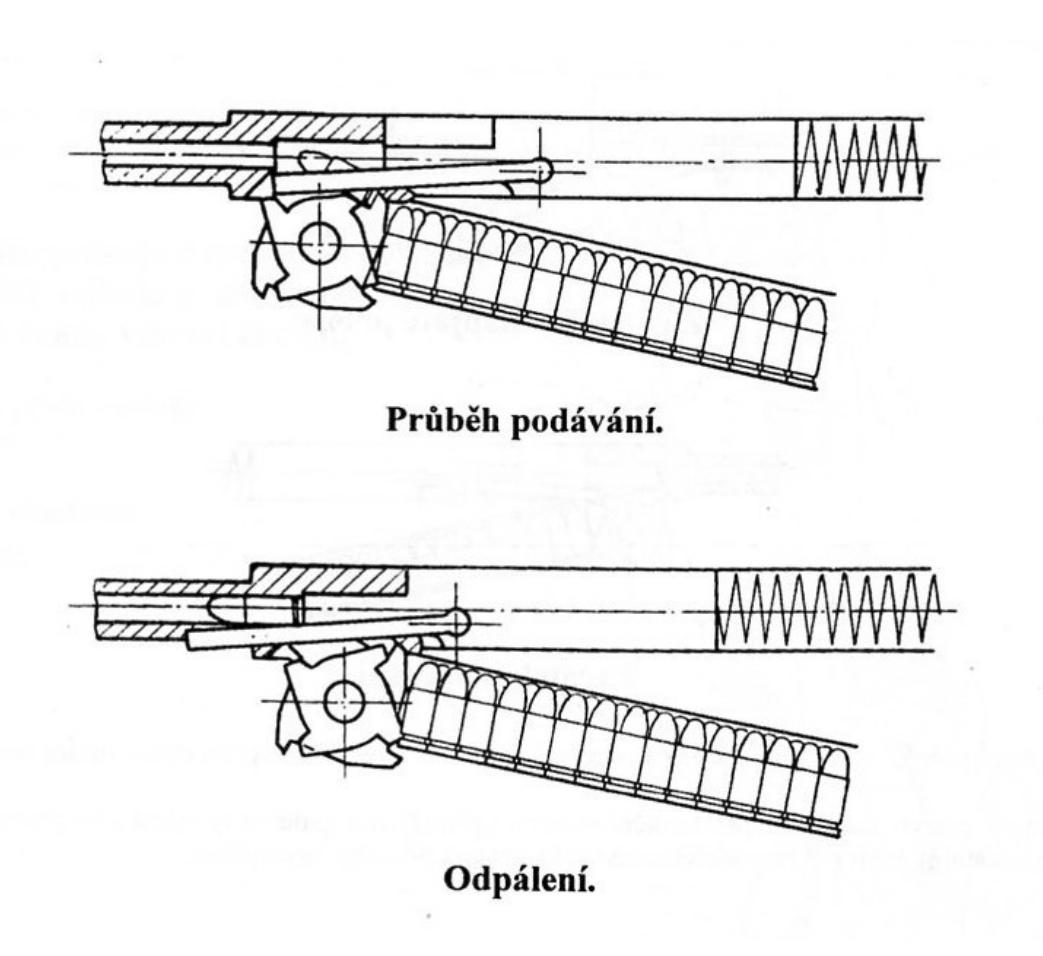The submachine gun had been perfected by the end of World War II as a dirt cheap, nearly disposable weapon for arming large numbers of men to fight the largest war of economy in history. However, despite this, post-war submachine gun designers would seek to push the concept into new roles and niches that would require a rethinking of the conventions established in that conflict. The submachine gun would be re-imagined as a close quarters battle weapon, and an echelon weapon, or PDW, for troops whose primary tasks was not combat. One of the primary obstacles to their suitability in this role, many designers recognized, was their long, protruding stick magazines, and so after the war pencils were put to drafting paper to come up with possible solutions.

The standard length, collapsing stock variant of the ZB-47, with stock collapsed. There was also a carbine variant with a shorter barrel; a very handy package indeed. Image source: milge.net
The Hill Submachine Gun, and its indirect successor, the FN P90, are examples of this, but another came from the country of Czechoslovakia after the war. The Brno factory employed at the time the famous engineer Václav Holek, who designed the ZB-26 and its more famous offspring the Bren light machine gun, and the BESA mounted machine gun. Holek, who was in his late sixties, designed a magazine system for a blowback operated 9mm submachine gun that is novel even by the standards of this series, with a compact appearance that avoided the protruding magazine of its stablemates.
To accomplish loading from a magazine that was essentially turned backwards and then swept back until it was almost horizontal, Holek designed a system which mated a very ordinary-looking stick type magazine to a gear-like rotating feeding unit. This loading unit, actuated by bar attached to a standard blowback-type bolt group, would rotate one position during every cycle, which stripped a cartridge from the magazine and presented it into a position suitable for feeding. The bolt, about halfway through its travel at this point, would simply pick the round up and feed it as normal. The action of this is illustrated in the images below, taken from the gun’s manual:
This system added some additional complexity to a kind of weapon that ideally would be as simple as possible, and that extended even to its use. Where a normal submachine gun would be cocked and ready to fire with a simple retraction of the bolt group, the ZB-47 needed to have its feed tray loaded, as well. A lever was provided on the right side that actuated the feeding wheel, loading the tray.

The same gun, stock extended. Note the position and orientation of the detached magazine. The rotary feeding handle is located on the side of the feeding drum, but is difficult to see because it has been temper blued. Image source: wikipedia.org
A manual for the ZB-47 is available online at Jan Sladký’s website. It includes some fanciful illustrations, including commandos hacking their way through a jungle with the gun, and even a Mexican bandito on horseback with one in a scabbard!
 Your Privacy Choices
Your Privacy Choices



